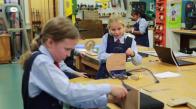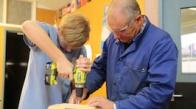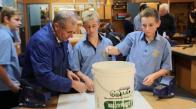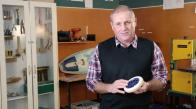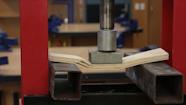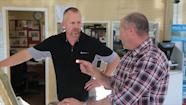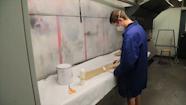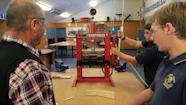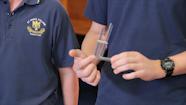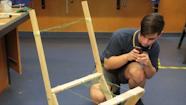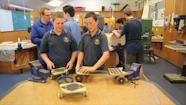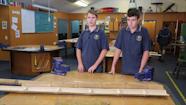Cedenco Foods is audited annually for their food safety accreditation. In addition they have two voluntary certifications that have global recognition.
Food safety and packaging in a global environment – Cedenco Foods
Transcript
Carla McCulloch: Being quite a big factory we have a lot of processes and procedures. It’s really important that we maintain our food safety programme accreditation with the Ministry of Primary Industries. So they send someone every year to audit us and so they come in and check that what we say we do in our procedures is what we do in the plant. So that could be a one to two day audit, so that’s the bare minimum food safety compliance that we need to do, and that meets our obligations under the New Zealand food act.
The next step up is we have ISO 9000, which is a quality management system certification. Then we have our food safety certification as well, so those two are voluntary certifications that we as a company decided to demonstrate to the customers that our procedures and processes were very good, we went after those certifications. Some companies don’t have them, most companies have the ISO 9000 but very few companies in New Zealand have the FSSC 22000 certification. So that’s been a really big achievement for the company it requires a lot more procedures and monitoring and the audits are a lot tougher and longer. So it’s a big credit to the company to achieve that.
So if we’ve got these extra certifications it’s a really good marketing tool for our marketers, so they can go to our customers look we have these certifications and the customer goes oh excellent and it ticks a lot of their boxes. So if there is a company that doesn’t have a certification but the same product then they will look at us more favourably and buy our products over somebody else's, and it gives the customers confidence that we’re in compliance and we’re not producing unsafe food and that they're not going to have a lot of issues with us.
Preservation and processing of our products is very important. What we need to understand and it’s a very big part of our business is how we package our products and how we make sure they get to the marketplace in good condition. The packaged product goes into a container and gets sent by ship to most countries, so the packaging has to support the weight of the pallet. The customers are very picky if the carton has collapsed or if the tape has broken off, or if the label has come off. So there’s a lot of aspects to our packaging that needs to be fully understood. Sometimes the customer will then receive the pallet and it’s collapsed, or it’s got damaged boxes and product, so then they’ll ring us up and say look, this isn’t what I expected can I please have a refund, and so then we’ve got a whole big investigation to find out why that’s happened.
So, a really important part of our process is through the R and D team and any small changes like that, that can have a massive effect on the product at the end when it reaches the customer that all those angles need to be investigated. It’s really important for our powders that they are stored at low humidity and at lower temperatures so that it maintains its colour. Of course a lot of our frozen products need to be maintained in a cold chain storage in the entire transport to the customer. So pumpkin powder can be processed early in the year, pumpkins themselves can be harvested from anywhere from January through to May. The pumpkins are stored and then by the time we are ready to use them we will process them. The powder is very shelf stable and it can be up to two years before the customer receives the pumpkin powder. So another important aspect of our business is doing shelf life testing, so we set up mock pallets and every month we pull a bag out and we test for colour, moisture, and all those things to make sure that our packaging has remained in tact and that no oxygen has got into the pumpkin powder and destroyed its colour and caused it to go lumpy or anything like that.
Related videos
Real food, real fast (02:35)
Students were set a brief to develop a faster, fresher, healthier takeaway based on an analysis of a traditional recipe....
A food bag for a family dinner (03:31)
With a focus on using seasonal produce and their families as stakeholders, students produced great recipes and food bags for a family dinner....
My context and issue (04:57)
Year 13 students share about the contexts and issues they have chosen in their food technology programme.
Engaging contexts in product design (03:09)
Abby Dingle discusses materials and tools that engage students in product design.
Combining knowledge and practice (01:58)
Steve Andrew explains how understanding materials is essential for effective technological practice.
Linking hands-on experiences and understandings (03:54)
Hands-on experiences allow the students to see materials understandings in action.
Play, experiment, explore (02:55)
Steve Andrew lets the students see, feel, and play with products to develop their understandings in materials.
Finding materials to meet the specs (02:36)
Steve Andrew shares how students identify material specifications in a brief and then test materials to find those that are suitable....
School–industry relationship cuts both ways (03:36)
Steve Andrew and Terry Rillstone describe the way the relationship between St John's College and The Shop has benefits for them both....
Pushing the boundaries with materials (02:53)
Steve Andrew describes how his senior students have the confidence to select and work with unfamiliar materials.
Exploring unfamiliar materials (02:44)
Year 12 students from St John's College describe what they know about bamboo and how they are applying this knowledge to their projects....
Students and teachers talk about testing materials in year 11.
Manipulating, forming, and transforming
Students in year 10 describe manipulating, forming, and transforming materials.
Evaluating materials for an outcome
Steve Andrew and students talk about using their knowledge to test materials for their projects at year 12.
Year 10 students describe some of the attributes for the snake skates they are developing.
Senior students select their own issues
Year 12 students talk about the issues that they have selected for their projects.




